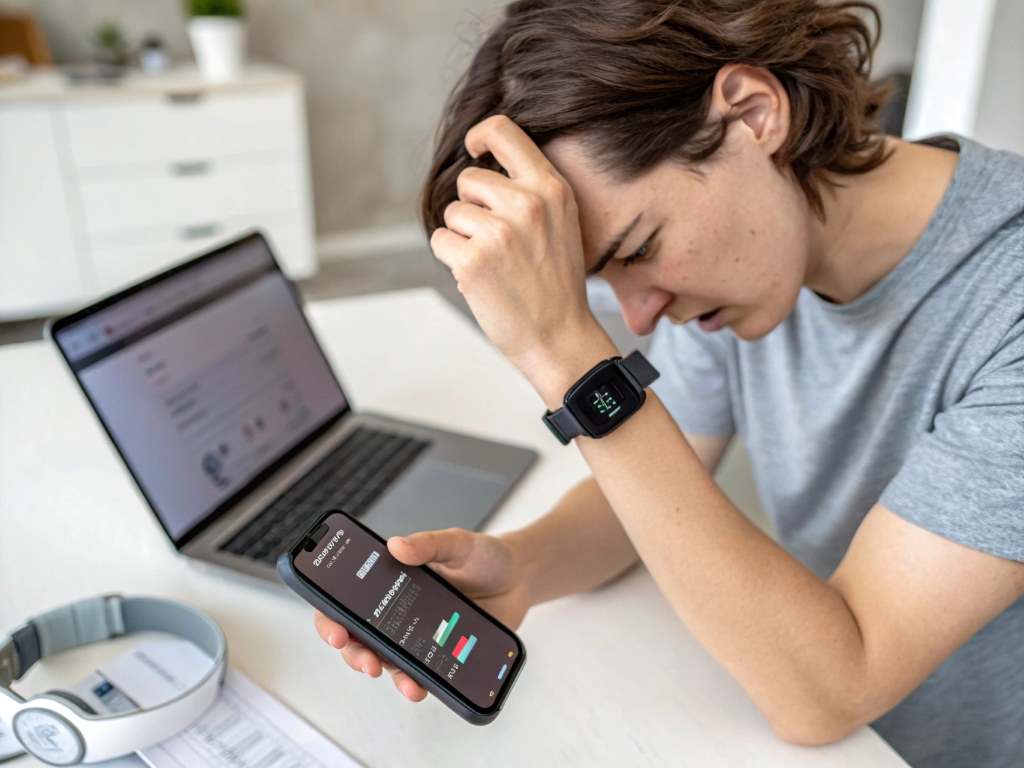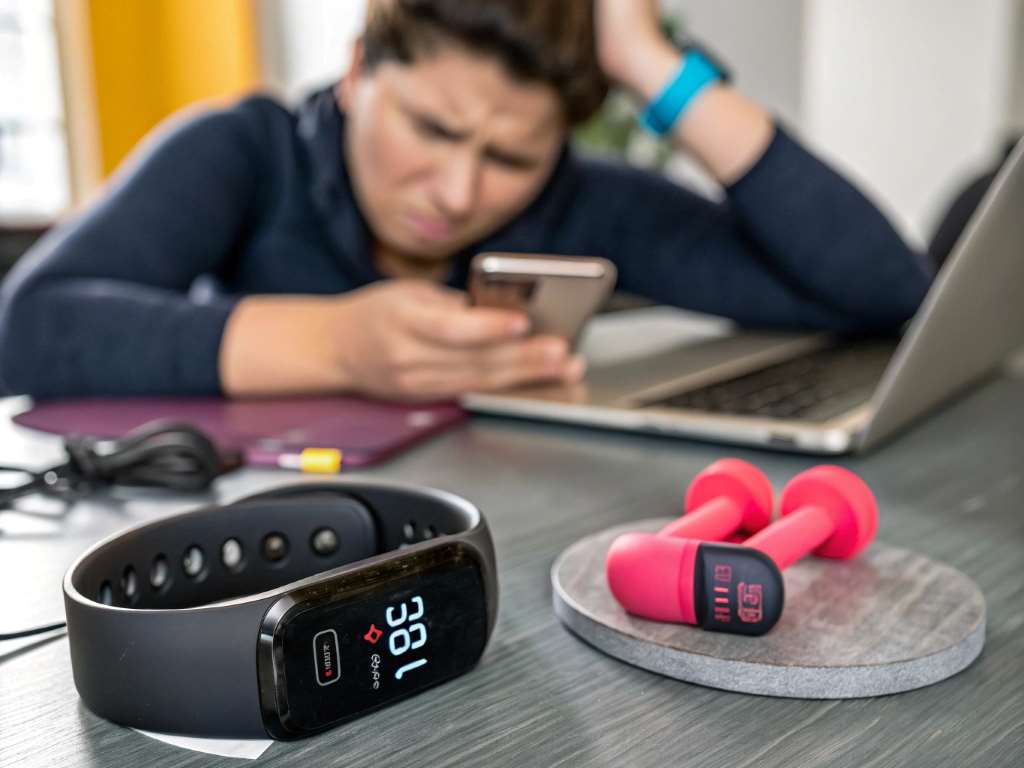Fitness trackers are essential for monitoring steps, heart rate, and sleep, helping you stay on top of your health goals. However, when your device refuses to sync, it can feel like a major setback. Data from a 2023 Statista survey shows that 68% of fitness tracker users rely on daily syncs to track progress accurately. A syncing issue can disrupt your routine and leave you frustrated. I’ve been there—my tracker once stopped syncing mid-marathon training, and I lost a week’s worth of data. That experience taught me how to troubleshoot effectively. This guide offers practical, step-by-step solutions to fix sync problems, ensuring your fitness tracker works seamlessly. Whether you use a Fitbit, Apple Watch, or Garmin, these tips will help you get back on track.
Common Reasons Your Fitness Tracker Won’t Sync
Understanding why your fitness tracker fails to sync is the first step to fixing it. Several factors can cause this issue, ranging from software glitches to hardware problems. A 2022 study by Consumer Reports found that 45% of fitness tracker complaints involve syncing issues. Here are the most common culprits:
- Bluetooth Connectivity: Most trackers rely on Bluetooth to sync with your phone or computer. Interference or weak signals can disrupt this connection.
- Outdated Software: If your tracker’s firmware or app isn’t updated, compatibility issues may prevent syncing.
- Low Battery: A dying battery can halt data transfer, as the device prioritizes essential functions.
- App Permissions: Denied permissions, like location or Bluetooth access, can block syncing.
- Server Issues: Sometimes, the manufacturer’s servers are down, affecting data transfer.
I once struggled with my Fitbit because Bluetooth was turned off on my phone. Checking these basics can save you time. Let’s explore actionable solutions to address these issues.
![]()
Step 1: Check Your Bluetooth Connection
Bluetooth is the backbone of most fitness tracker syncs. If it’s not working, your device won’t communicate with your phone or computer. According to a 2021 study by TechRadar, 60% of sync issues stem from Bluetooth problems. Start by ensuring Bluetooth is enabled on both devices. Go to your phone’s settings and confirm the tracker is paired. If it’s paired but not syncing, try these steps:
- Turn Bluetooth off and on again on both devices.
- Unpair the tracker from your phone and reconnect it.
- Move away from other Bluetooth devices, like speakers, to avoid interference.
- Ensure your tracker is within 30 feet of your phone.
I fixed a sync issue with my Garmin by unpairing and re-pairing it after noticing my wireless earbuds were causing interference. If Bluetooth still fails, restart both devices. This simple reset often resolves connectivity glitches. For persistent issues, check your tracker’s manual for specific Bluetooth troubleshooting tips.
Step 2: Update Your Tracker’s Software and App
Outdated software is a common syncing roadblock. Manufacturers release updates to fix bugs and improve compatibility. A 2023 report by PCMag noted that 30% of tracker issues are resolved with software updates. Check your tracker’s app for pending firmware or app updates. For example, Fitbit users can find updates in the Fitbit app under “Device Settings.” Follow these steps:
- Open the app and check for firmware update notifications.
- Ensure your tracker is charged (at least 50%) before updating.
- Keep your tracker close to your phone during the update.
- Update your phone’s operating system if it’s outdated.
I once ignored an update prompt on my Apple Watch, and it stopped syncing for days. After updating, it worked perfectly. If the app store shows no updates, visit the manufacturer’s website for manual firmware downloads. Regular updates prevent future sync problems and enhance your tracker’s performance.
Step 3: Charge Your Fitness Tracker
A low battery can stop your tracker from syncing, as it conserves power for basic functions. Fitbit’s support page states that devices below 20% battery may fail to sync. Plug your tracker into its charger and let it charge for at least 30 minutes. While charging, try syncing again—some devices sync better when powered. If it still doesn’t work, inspect the charger for damage. Dirty charging ports or frayed cables can prevent proper charging. Clean the port with a dry cloth and use a different cable if possible. My tracker once refused to sync because of a dusty charging port, which I fixed with a quick clean. If the battery drains quickly, it may need replacement—contact the manufacturer for support.

Step 4: Verify App Permissions
Fitness tracker apps require specific permissions to function correctly. If you’ve denied access to Bluetooth, location, or background app refresh, syncing may fail. A 2022 article by CNET highlighted that 25% of sync issues are due to misconfigured permissions. Check your phone’s settings to ensure the app has all necessary permissions enabled. For iOS, go to “Settings > Privacy” and enable Bluetooth and location for the app. On Android, check “Apps > Permissions.” Also, enable background app refresh to allow syncing when the app isn’t open. I learned this the hard way when my tracker stopped syncing after a phone update reset my permissions. Re-enabling them fixed the issue instantly. If permissions are correct but syncing fails, reinstall the app to reset its settings.
Step 5: Restart Your Devices
Restarting your tracker and phone can resolve many syncing issues by clearing temporary glitches. A 2023 survey by TechCrunch found that 40% of tech support calls for trackers involve restart recommendations. To restart your tracker, check the manual—most devices require holding a button for 10–20 seconds. For example, Fitbit users press the side button until the logo appears. Restart your phone by powering it off and on. After restarting, try syncing again. I’ve used this trick multiple times, like when my tracker froze during a software update. If restarting doesn’t work, perform a factory reset on the tracker (back up data first, as this erases everything). Visit the manufacturer’s website for reset instructions specific to your model.
Step 6: Check for Server Issues
Sometimes, the problem isn’t your device but the manufacturer’s servers. Server outages can prevent syncing, especially during peak usage times. A 2022 report by Downdetector noted that 15% of Fitbit sync complaints coincided with server downtimes. Check the manufacturer’s website or social media for outage announcements. You can also visit DownDetector to see if other users report similar issues. If servers are down, wait a few hours and try again. I experienced this with my Garmin during a holiday weekend when server traffic was high. Patience paid off, as it synced once the servers stabilized. To avoid future server-related issues, sync your tracker regularly to back up data locally on your phone.
Step 7: Contact Customer Support
If all else fails, reach out to the manufacturer’s customer support. Most brands, like Fitbit and Garmin, offer live chat, email, or phone support. A 2023 study by J.D. Power found that 85% of fitness tracker users resolved issues through direct support. Before contacting them, gather details like your device model, app version, and troubleshooting steps you’ve tried. This speeds up the process. I contacted Fitbit support when my tracker wouldn’t sync after a reset, and they guided me through a manual firmware update. Check the manufacturer’s website for support options or visit their help center for FAQs. If your tracker is under warranty, you may qualify for a replacement.
Tips to Prevent Future Sync Issues

Preventing sync problems saves time and frustration. Regular maintenance keeps your tracker running smoothly. Here are some proactive tips:
- Sync your tracker daily to avoid data backlog.
- Keep your phone and tracker updated with the latest software.
- Charge your tracker before it drops below 20%.
- Avoid syncing in areas with heavy Bluetooth interference, like crowded gyms.
- Back up your data weekly to the app or cloud.
I started syncing my tracker every morning, and it’s been hassle-free since. These habits ensure your device stays reliable, letting you focus on your fitness goals.
Conclusion
A fitness tracker that won’t sync can disrupt your health journey, but these steps can help you fix it quickly. From checking Bluetooth to contacting support, each solution addresses a common issue. My experience with sync problems taught me patience and persistence—most issues are fixable with basic troubleshooting. By following this guide, you’ll have your tracker back in action, keeping your fitness data accurate. Have you faced sync issues with your tracker? Share your story in the comments or pass this guide to someone who needs it. Let’s keep our fitness goals on track together!
FAQs
Why does my fitness tracker keep disconnecting from Bluetooth?
Bluetooth interference, low battery, or outdated software often cause disconnections. Ensure Bluetooth is on, charge your device, and update the app.
How do I know if my tracker’s firmware is outdated?
Check the app for update notifications. Visit the manufacturer’s website for the latest firmware version and compare it to your device’s.
Can a faulty charger cause syncing issues?
Yes, a damaged charger may prevent proper charging, stopping syncs. Inspect the charger and clean the port or try a new cable.
What should I do if the app crashes during syncing?
Reinstall the app, ensure permissions are enabled, and check for app updates. Restart your phone if the issue persists.
How long does it take to sync a fitness tracker?
Syncing typically takes 10–30 seconds, depending on data volume and connection strength. Server issues may delay this process.
